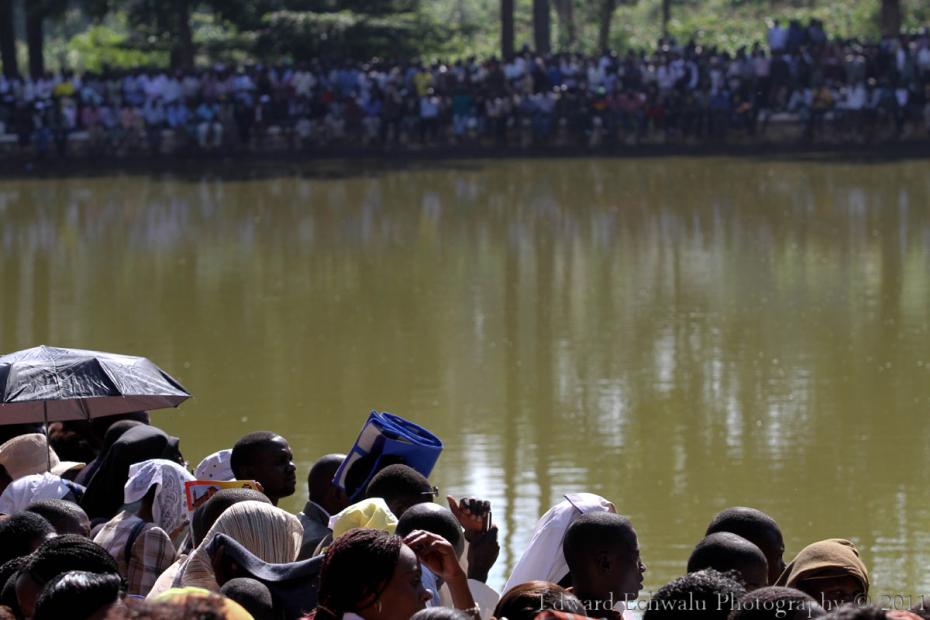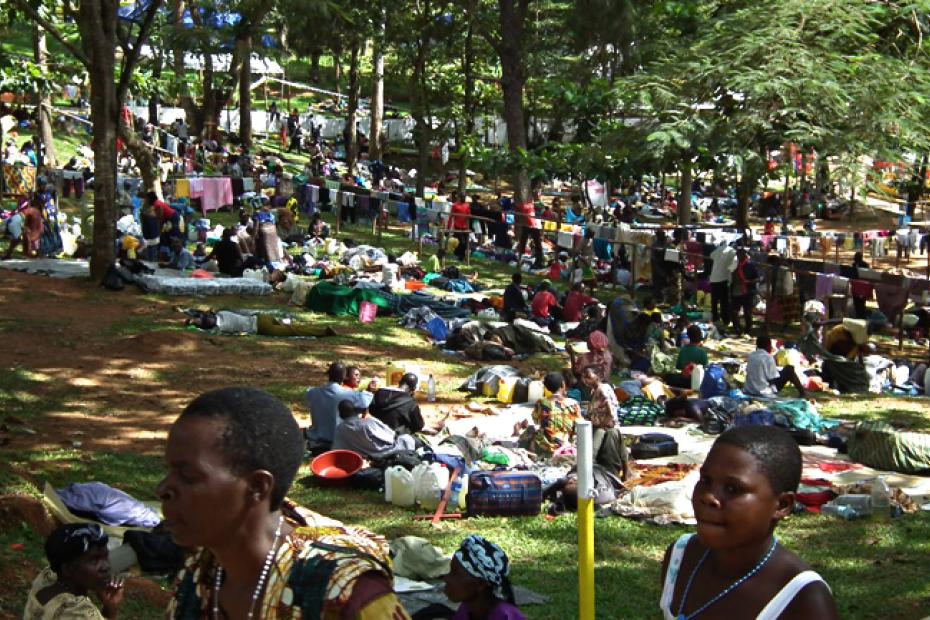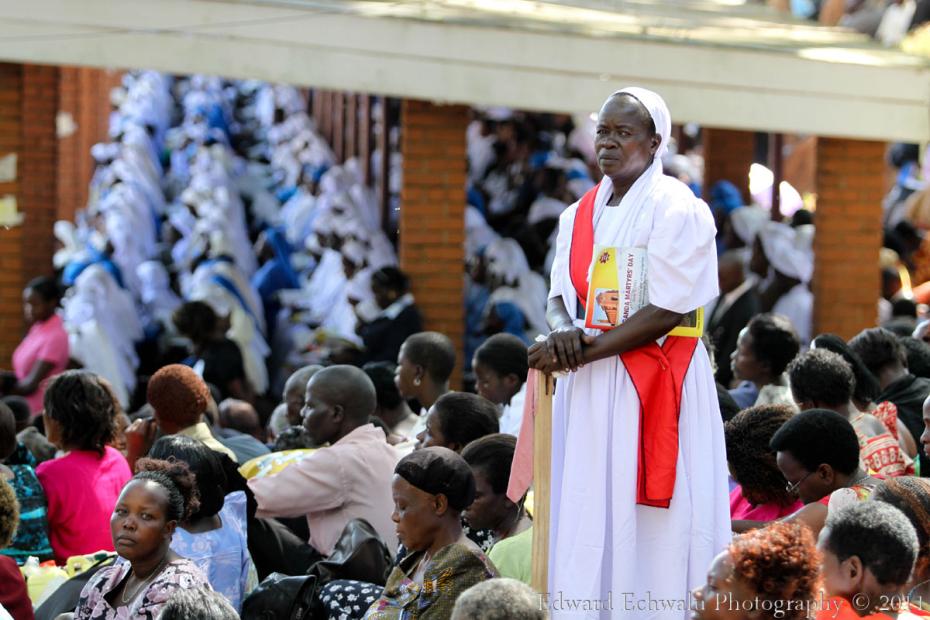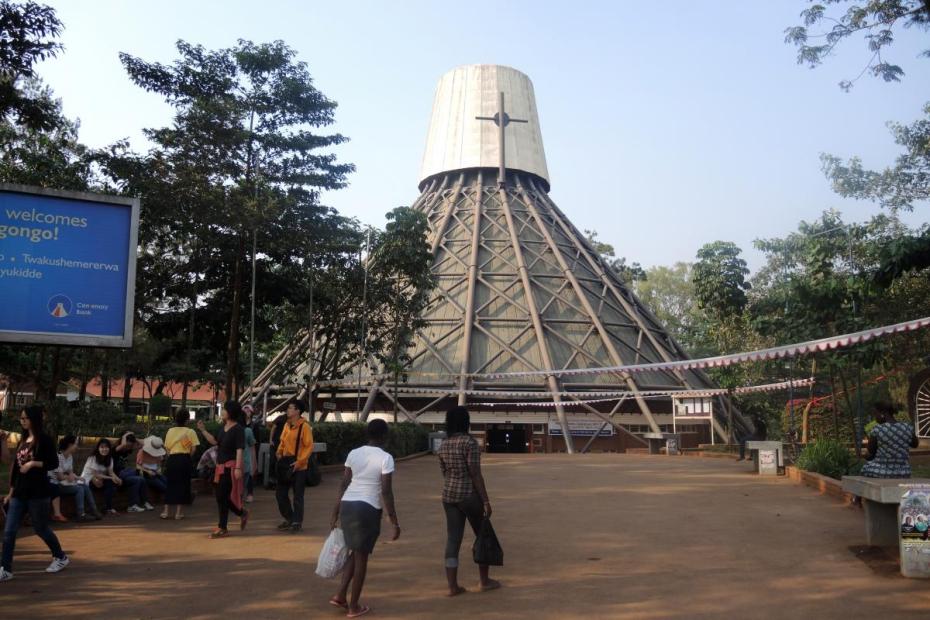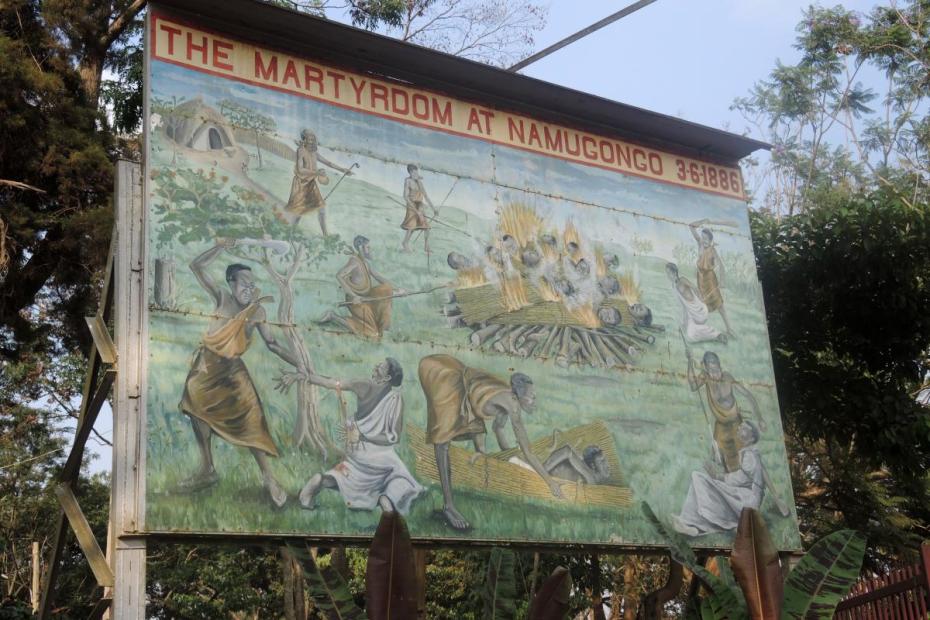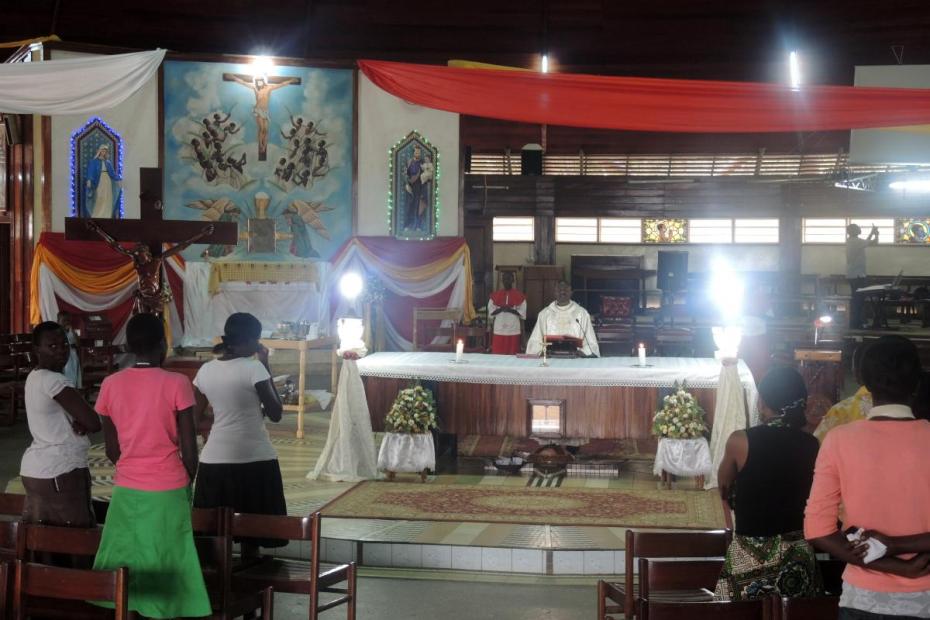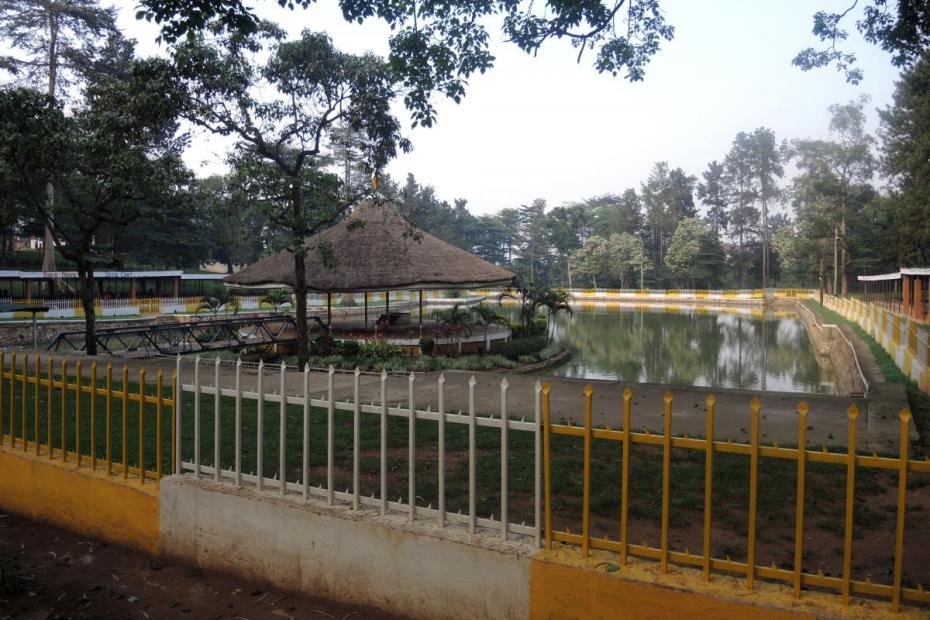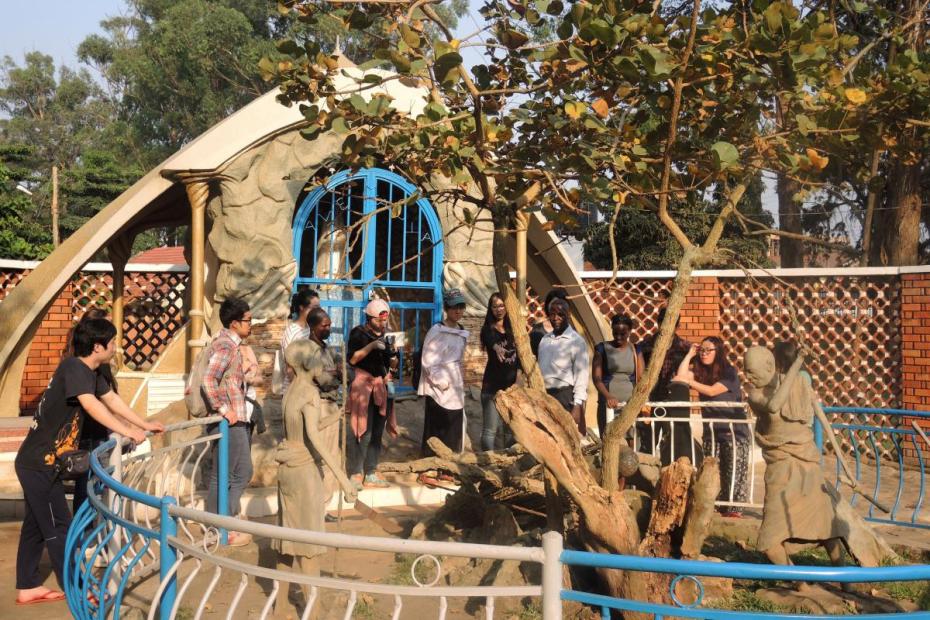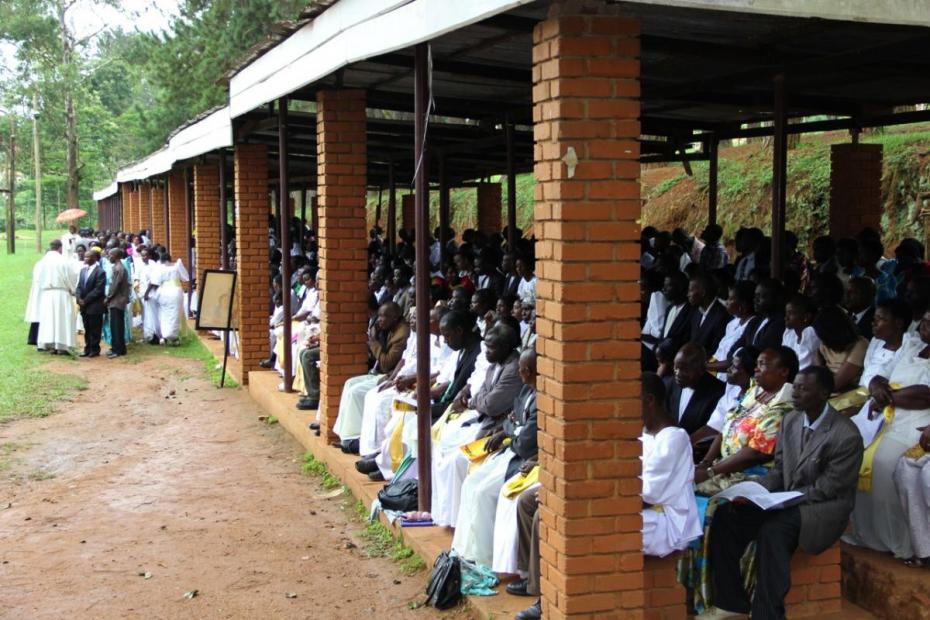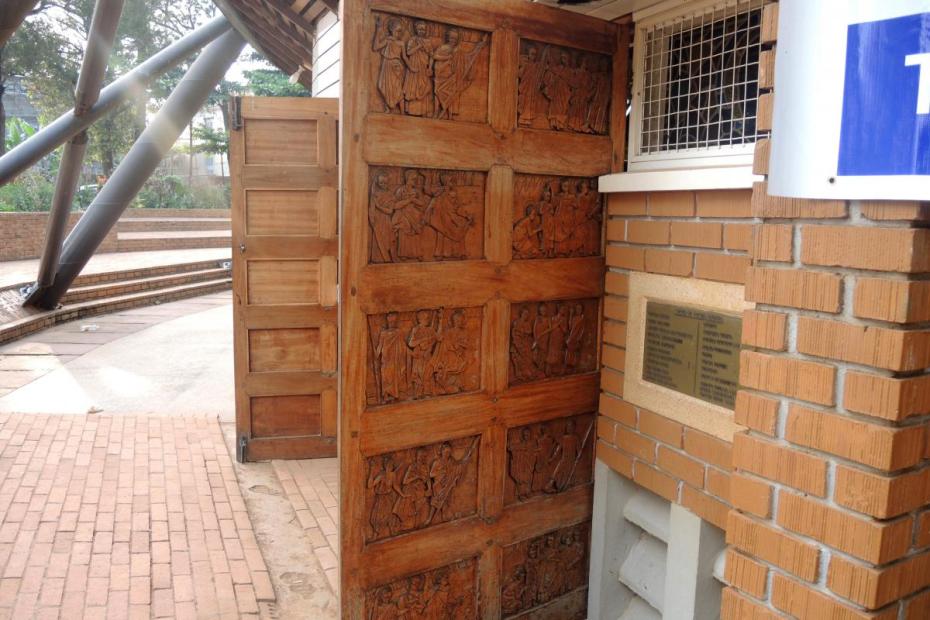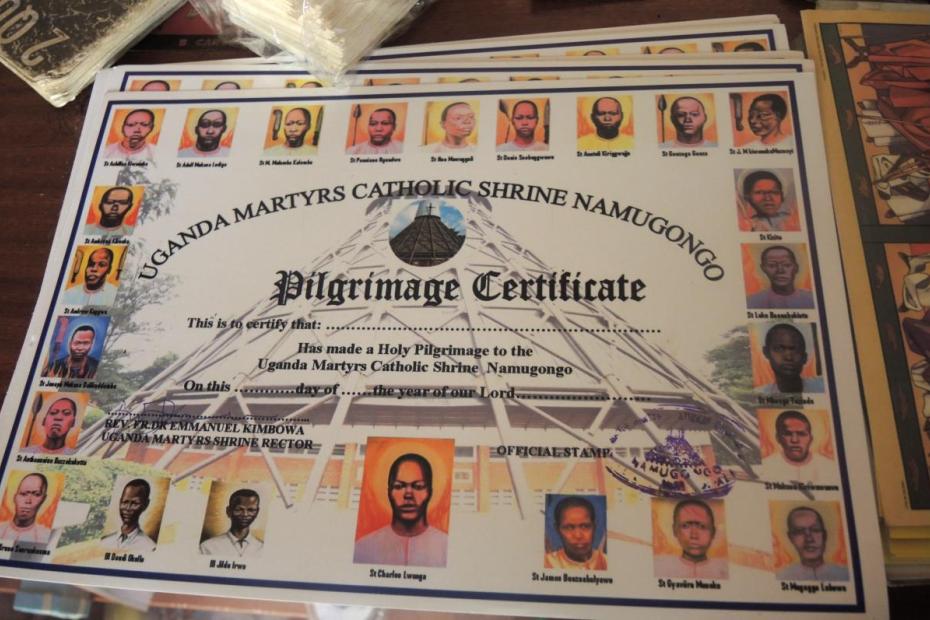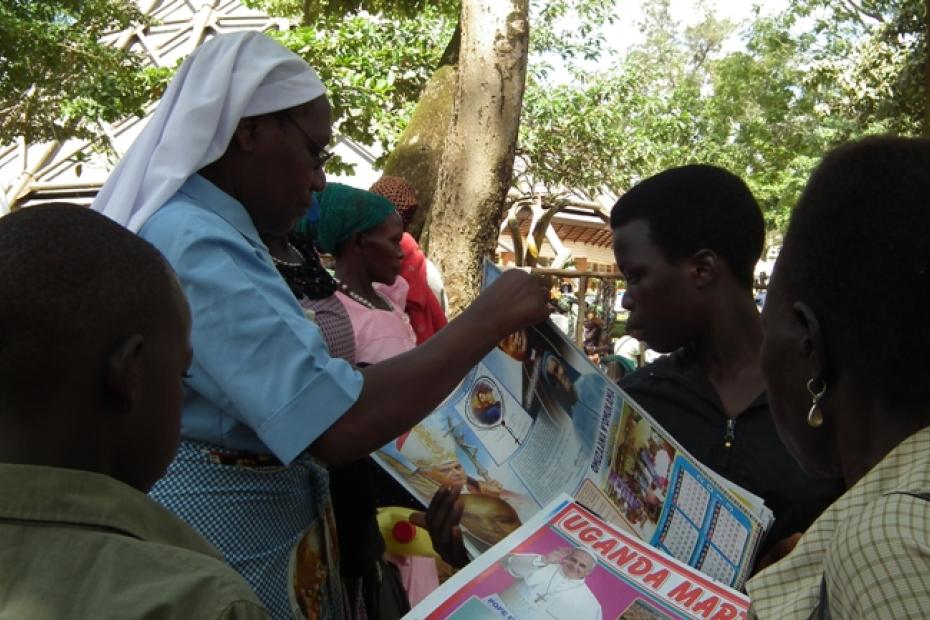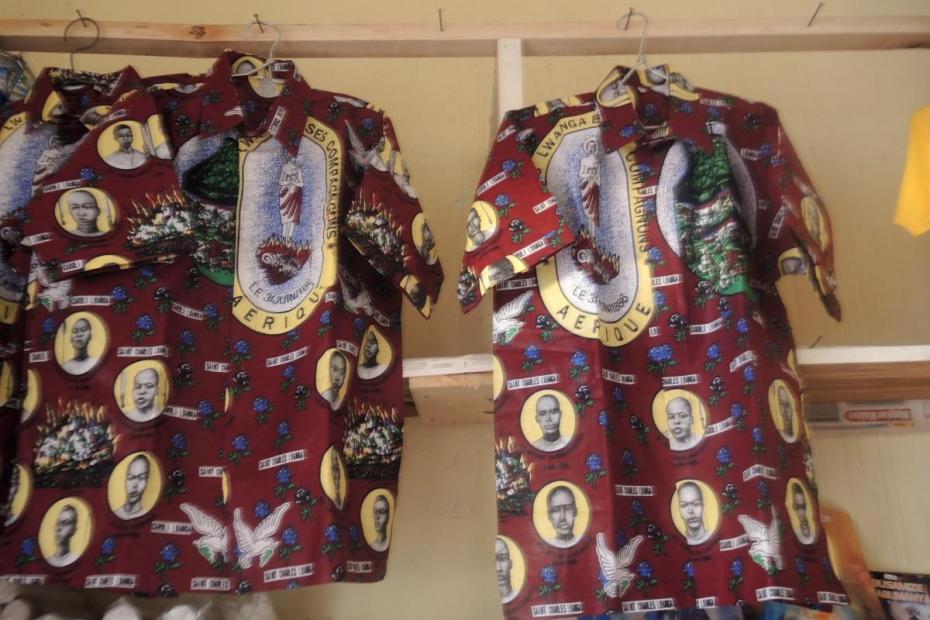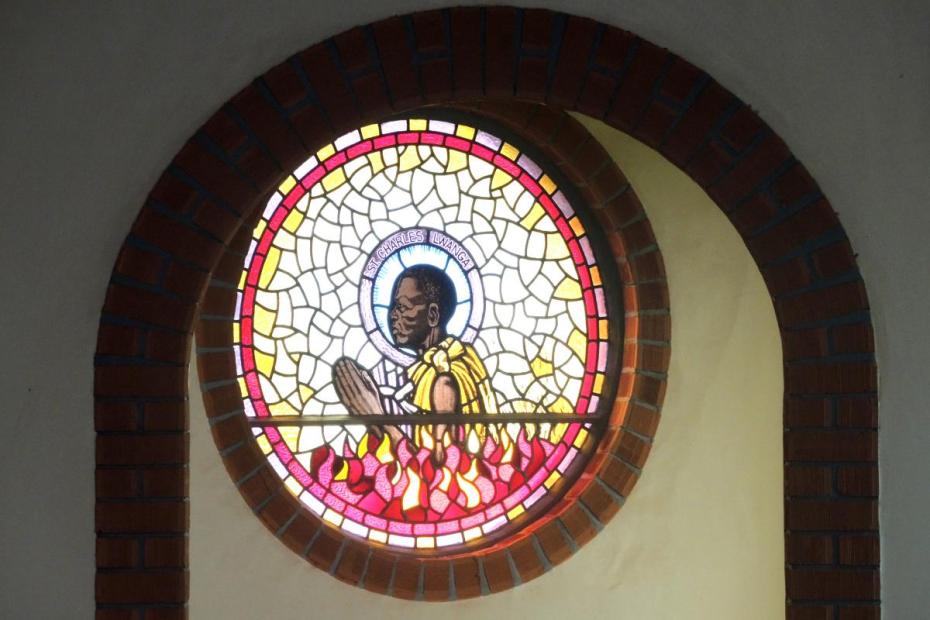The Uganda martyrs, killed during the first decade of Christian presence in Uganda, play a huge role in Ugandan Catholic life. A total of 45 martyrs, Baganda men ages 14-50, were killed by the King of Buganda between 1885 and 1887. Twenty-two were Catholic, and 23 were Anglican. Both churches have celebrated their martyrs, but the Roman Catholics have been in the forefront of celebrating and honoring the martyrs. The Catholic martyrs were beatified in 1920 and canonized in 1964. Churches are built at many of the sites where martyrs were killed, and many other churches honor them in murals and stained glass. The most prominent site is the Namugongo shrine, a large property at the site where St. Charles Lwanga and his companions, mostly pages at the royal court, were burned alive.
The Uganda martyrs play a tremendously important role in constructing a Ugandan Catholic identity. Whereas Christianity might be regarded as a force that severs Ugandans from a more "authentic" pre-Christian heritage, the story of the martyrs, as it is commonly told, has the opposite effect, invoking a large group of ancestors whose sacrifice calls Ugandans to their most authentic selves, as Christians. The choice of these Ugandans to die for their faith made Christianity a choice, not an imposition.
The Uganda Martyrs' Shrine, at Namugongo, on the northeast edge of the Kampala metropolitan area, is home to a modernist basilica church whose altar is above the place where the martyrs' pyre is said to have been. Nearby is an Anglican church to celebrate the Anglican Uganda martyrs. The compound includes a life-size diorama of the burning of St. Charles Lwanga, and a large park and pond, which is the site of the annual feast Mass. Though the pond is now blocked off by a fence, pilgrims often wash in the pond or drink water from it, regarding it as a holy source because it is the place where the martyrs' executioners washed the martyrs’ blood off their hands.
Ugandans often mention that three popes, Paul VI, John Paul II and Francis, have visited the site.
The Uganda Martyrs' Feast Day at Namugongo
While firm numbers are hard to come by, Namugongo's celebration of the Feast of the Uganda Martyrs on June 3 is almost certainly among the largest annual religious gatherings in the world. Attendance estimates range from 500,000 to the low millions. The feast is a national holiday, and the full event is covered on national television. Catholic parishes and expatriate communities also have their own celebrations, but the primary events take place at Namugongo to mark the place and date when St. Charles Lwanga and 12 companions were burned alive.
Pilgrims from Kenya, Tanzania, Rwanda and Uganda, many of whom walk the whole distance on pilgrimages lasting as long as two weeks, travel to the shrine for a massive annual celebration on June 3, the date when St. Charles Lwanga and many of the Uganda martyrs were killed. Many stay in schools, parishes or hostels nearby, but many apparently sleep overnight on the grounds, not least to insure a good spot to see and participate.
The feast is preceded by a nine-day novena. Smaller groups gather for prayer in different places. Masses and services run through the night on the eve of the feast.
On the feast day, Mass runs about five hours, starting at 10 a.m. It includes considerable singing and dancing in traditional styles. The long procession that opens the Mass includes the reliquaries of the martyrs, palms, incense, and a large number of clergy. Most elements involving the clergy are solemn, with clergy vested in red Roman vestments. The stillness of the clergy and most of the worshippers is in sharp contrast to the movement of the singers and dancers. Lay people who have official roles often dress up for the occasion in traditional forms of dress, depending on the ethnic group.
The activity centers around the large square pond that is revered as the place where the martyrs' executioners washed away the martyrs’ blood. The altar is built at the center of an island platform, accessible by bridge, and has a thatched-style roof. Other sides of the pond are lined with covered stands for choirs and dignitaries. Few of the pilgrims are actually able to see the Mass firsthand, given the trees and topography.
The liturgy combines many varieties of Ugandan traditional culture with standard Roman liturgical forms. The presentation of the gifts is extensive, including foods, vestments, and a wide variety of other gifts brought in procession by a large number diocesan groups. Most of the liturgy is in English, though there are occasional translations into other languages for pilgrims, and many of the songs are in native languages.
At Namugongo, as at some other Catholic sites and shrines, pilgrims touch rosary beads and cloth to the wooden doors of the church, which depict the martyrdoms, and to reliquaries containing their remains. Others, if they can get near the pond, seek out water from it in plastic jugs they pass down.

